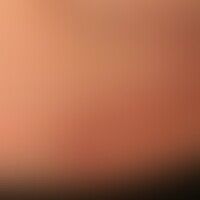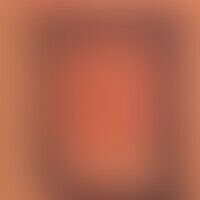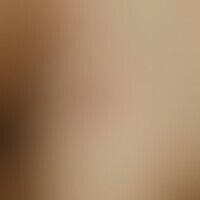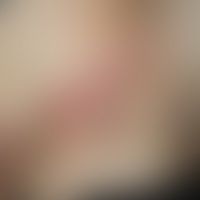Image diagnoses for "Torso", "Bubble/Blister", "red"
26 results with 95 images
Results forTorsoBubble/Blisterred

Varicella B01.9
Varicella: generalized exanthema with coexistence of vesicles, papules and incrustations.

Solar dermatitis L55.-
Bullous Dermatitis solaris. multiple, acute, generalized, 24-hour-old, 0.3-3.0 cm large, isolated and grouped, red, bulging blisters (II degree burns) occurring in UV-exposed areas, localized on a large, homogeneous, painful erythema.

Diffuse cutaneous mastocytosis Q82.2
diffuse cutaneous mastocytosis, with uniform waxy skin texture and artificial (subepithelial) blistering. peau-dórange-like skin aspect. detailed view.

Dermatitis herpetiformis L13.0
dermatitis herpetiformis: chronic recurrent course of the disease. disseminated, burning, itchy, urticarial papules, papulo-vesicles and erosions. lesions are aggregated to larger plaques. p. detail images.
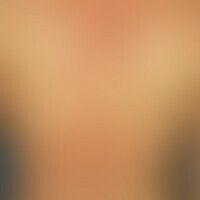
Varicella B01.9
Varicella: generalized exanthema with coexistence of vesicles, papules, papulopustules in the area of the trunk.
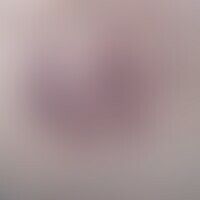
Herpes simplex virus infections B00.1
Herpes simplex virus infection: hemorrhagic, grouped vesicles in the area of the forearm.

Linear IgA dermatosis L13.8
Dermatosis IgA-lineare: fresh onset of a previously known linear IgA dermatosis, where disseminated, itchy and painful papules and papulo vesicles are present.

Toxic epidermal necrolysis L51.2
Toxic epidermal necrolysis. 2 weeks after taking Allopurinol in recurrent attacks of gout, itching and redness on the back for the first time, within a few days dramatic worsening of the general condition with several acute, flat, generalized, randomly distributed, sharply defined, red, weeping and painful erosions. Additional findings were multiple, acute, asymmetrically arranged, disseminated, skin-coloured blisters on a flat erythema on the remaining integument.

Lymphangioma circumscriptum D18.1

Zoster B02.9
Zoster: in segmental distribution (Th4), grouped vesicles on reddened skin in a 38-year-old man. Moderate pain, healing without complications, no postzosteric neuralgia.
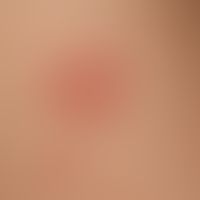
Erythema multiforme, minus-type L51.0
Erythema multiforme: in addition to a larger red plaque with central blister formation, a fresh, flat papule.
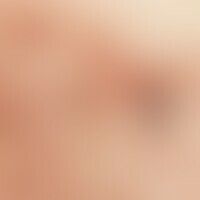
Lymphangioma circumscriptum D18.1
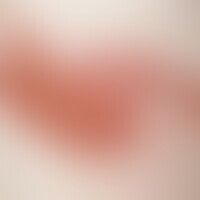
Zoster B02.9
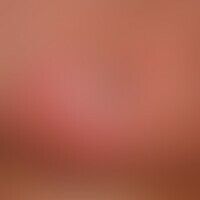
Toxic epidermal necrolysis L51.2
Toxic epidermal necrolysis. detailed view of a solitary, acutely occurring, perimamillary, sharply defined, slightly weeping, extensive, erosive detachment of the skin. the sample biopsies showed a vacuum-associated interfacial dermatitis with epidermal keratinocyte necroses.

Dermatitis medusica L24.8
Dermatitis medusica: In this general view, 3 weeks after the contact event, a solitary, linearly shaped, rough, strongly increased in consistency, flatly elevated, finely lamellar scaling plaque with scabbing in a 50-year-old man is shown. During a Mediterranean holiday, painful punctures on the back caused by contact with a jellyfish were first shown. The tentacles of the cnidarian could only be removed from the back with difficulty, then formation of bleeding at the adhesion sites. Immediately after contact, formation of streaky, pale erythema.
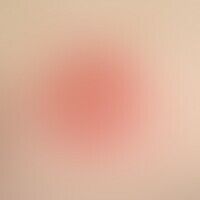
Erythema multiforme, minus-type L51.0
erythema multiforme: suddenly appeared, for 2 days existing, itchy, flat, cocard-like plaque on the back of a 17-year-old woman. the skin change appeared shortly after the beginning of antibiotic therapy for urinary tract infection. further, similar skin changes appeared on other parts of the body.
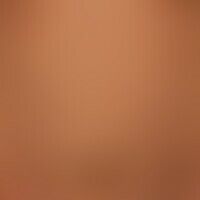
Pemphigus vulgaris L10.0
Pemphigus vulgaris: multiple, chronic, since 3 years intermittent, symmetric, trunk-accentuated, easily injured, flaccid, 0.2-3.0 cm large, red spots, plaques and pallor, confluent to, weeping and crusty areas; extensive infestation of the oral mucosa and capillitium.

Erythema multiforme, minus-type L51.0
Erythema multiforme: 35-year-old female patient with Z.n. herpes simplex virus infection 4 weeks ago. multiple, acutely occurring, itchy, exanthema, existing for a few days. 0.2-0.7 cm large, sharply defined, firm, red, smooth papules and partly confluent plaques with partly cocardium-shaped aspect and central blister formation.
